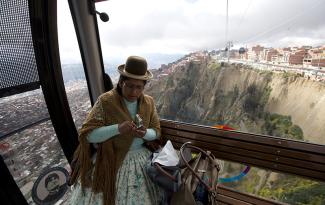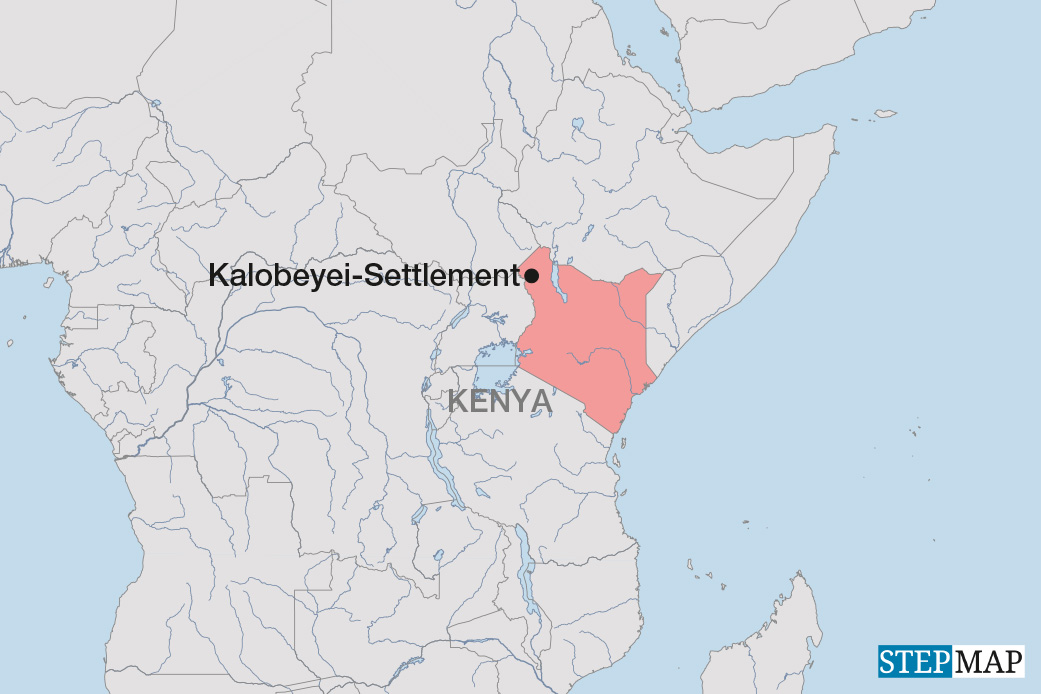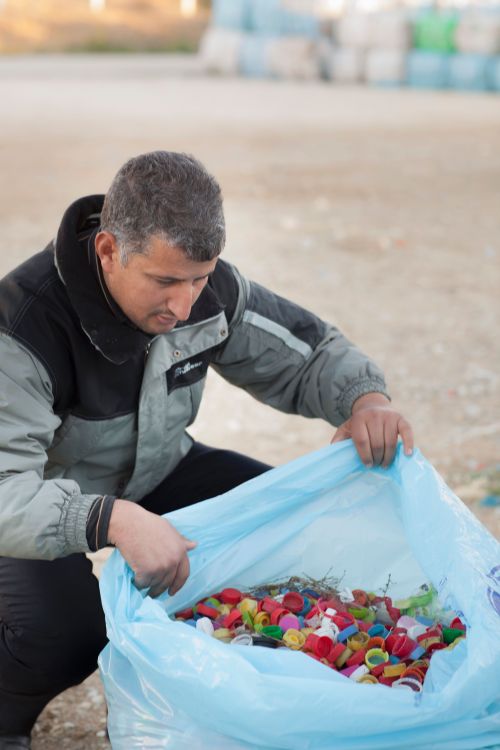Gondola lifts
Up in the air

South American cities such as Bogotá, Medellin, Caracas, La Paz or Rio de Janeiro all have similar problems: while middle and upper-class residents enjoy good road and rail connections in the districts where they live, the poorer people – who often live in much more remote, mountainous neighbourhoods – face long daily commutes by bus or motorcycle-taxi on heavily congested roads.
To tackle the growing mobility problems, many Latin American agglomerations have invested in aerial tramways. The advantages are obvious: cableways can be built fast and at a comparatively low cost. They are also environmentally friendly and, bearing in mind the explosive growth of urban populations, give people from disadvantaged neighbourhoods access to urban centres that would otherwise be hard to reach (see box next page). In theory, at least. In Europe and the United States, this kind of transport infrastructure mostly serves tourists in mountain areas, and tickets tend to be expensive. In South America, by contrast, it is a democratising mode of transport – provided it is accepted by the community.
This was not the case in Rio de Janeiro. The gondola lift built in 2011 for the Complexo do Alemão was hailed as a major infrastructural asset for this poor northern favela complex. With six stations, the cable car system took residents to the public train station which connected them to a train station with fast links to the city centre, free of charge and with minimal environmental impact. Previously, people had to rely on motorcycle-taxis or locally organised minibus services. The new scheme was thought to be perfect – but it did not work. Within just five years, after the 2016 Olympic Games were over, the cable car services were suspended. Rio de Janeiro’s gondola lift revealed the weaknesses of a system that works well elsewhere.
The gondolas have been in storage for three years now. All that remains is the giant stations crowning the hills, where police seek shelter in shootouts with drug gangs. The cableway’s fate was sealed by two factors: corruption and a change of operator. Its problems were summed up by Colombian architect Alejandro Echeverri at a 2013 city planning conference in Rio: “The Rio gondola lift does not appear to be accepted by the community.”
Sceptical residents of Rio say the city should first build a proper sewer system instead of investing in a prestigious gondola lift. “Most favela residents oppose the cableway because only tourists will benefit from it,” explains Michel Silva, a citizen reporter. He is from the Rocinha favela, which was supposed to get a gondola lift as well. “Money is wasted on the aerial tramway while we still have to live with open sewers.”
Like a Dream
Things are different in Medellin, Colombia – a city with many steep slopes. Its “Metrocable” system has been working like a dream since 2004. An award-winning model project, it was launched in conditions similar to those in Rio: poor urban districts clinging to mountain slopes, a city of marked social inequalities and paralysing traffic. Here, too, it was easier to build an aerial tramway than to build one at street level or underground.
Despite its success, however, Medellin’s system also draws criticism. Some residents and organisations complain that the project primarily serves tourism and promotes gentrification. Tourists in Medellin like to travel by cable car. So do their counterparts in Bolivia’s capital La Paz, where the cable car network has become one of the city’s biggest tourist attractions. “Mi Teleférico” has been in successful operation over the mountains since 2014 and connects La Paz with the neighbouring city of El Alto, 400 metres higher. El Alto has about about one million, mostly indigenous people.
Connecting it to La Paz was a priority for Evo Morales, the controversial left-wing president who was in power from 2006 to November 2019 (see comment by Katie Cashman on page 13 of this e-Paper). His inclusive policies helped to stabilise the country politically, but his authoritarian tendencies became increasingly evident. He fled the country in a post-election crisis and his supporters speak of a military coup.
With ten lines in operation, the La Paz agglomeration now has the most extensive aerial public transport system in the world. The first line opened in 2014 and the last one is due to be completed in 2020. In contrast to other megacities, the cable car system here is not a supplementary means of transport; it is the principal local public transport system. “Teleférico reaches a large part of the Bolivian population. It is the government’s most extensive and costliest project and was constructed within a very short time. This required new national legislation,” says Cecilia Barja, a social worker. However, she argues that local authorities should have been involved in the implementation.
According to its own figures, Teleférico now carries around 2 million passengers a month, who can even avail themselves of solar-based Wifi systems installed in the gondolas. Nevertheless, Barja feels the cable car system fails to solve the main problem of transport: “Like everywhere in South America, we are experiencing vigorous urbanisation. Cities are getting fuller and fuller. Yet instead of integrating the cableway into the existing transport network, they designed it as an independent system.”
Nevertheless, poorer communities in particular are benefiting from the boom in cable car systems – in Cali, Manizales and Medellin in Colombia, Ecatepec in Mexico, Caracas in Venezuela and Santo Domingo in the Dominican Republic. Guatemala also plans to build a system in the coming years. Aerial tramways can carry far fewer passengers than an underground railway but any capacity shortfall is evidently outweighed by the fact that they are faster and cheaper to build. Moreover, they serve as an additional tourist attraction – one that gives a significant boost to urban districts.
But local communities remain ambivalent: “It’s a wonderful, exciting, memorable experience. You see new parts of the city and you get into conversation with strangers in the gondolas,” says Barja. “That is all very positive but it does not make up for the costs we end up paying in a poor country like Bolivia.”
Julia Jaroschewski is a freelance foreign affairs reporter specialising in Latin America.
jujaroschewski@gmail.com












